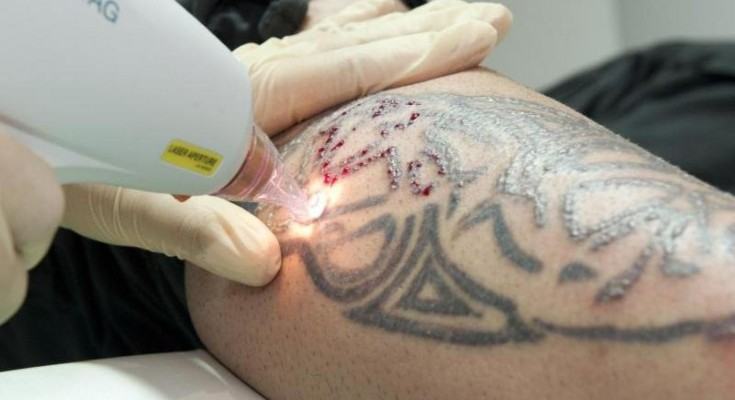-
14 July 2021
What Exactly Happens During Laser Tattoo Removal Process?

Tattoos have different meanings for different people. While some love to flaunt the artwork, others are entirely opposed to getting inked forever. Amongst the tattooed population, there are a growing number of people who begin to view the ink as a bother.
It could be because of several reasons that can hamper the social and emotional state of the individual. Thus, laser tattoo removal in Melbourne is capturing a lot of attention. Although the treatment has become popular, many people are still unaware of the intricacies of the procedure.
They consider it intrusive and painful. However, this is far from the truth. Laser tattoo removal is the most successful way of getting rid of ink without harming the skin. So, here is a rundown on what exactly happens during laser tattoo removal.
Laser technology has come a long way since its inception. It has become highly sophisticated and offers permanent ink removal without any scarring or burning if performed by a licensed and experienced practitioner.
The ink is deposited in the deepest layer of the dermis, which is below the upper layer called the epidermis. Professional tattoo artists make sure to deposit the ink deep so that it does not fade away with time.
The laser penetrates the epidermis and reaches the dermis to break down the ink pigment with heat. The highly targeted light beam is absorbed by the ink and does not affect the surrounding skin tissue.
The Q-switched Nd:YAG laser is effective on all skin types and tones and can remove multicoloured tattoos with as much ease as single-hued ones. Thus, there is no risk of pigmentation with advanced laser systems that are safe and tested for best results.
Laser tattoo removal does not burn the skin because the short laser pulses create a fleeting impact that is capable of only disintegrating the ink. However, the nanosecond range of the laser is too short-lived to affect the skin.
Although the pain during the procedure has been described as a rubber band snapping on the skin, people with lower tolerance can avoid it by speaking about it with the practitioner. During the appointment, he/she will apply a topical anaesthetic on the skin to avoid any discomfort. Thus, the treatment becomes painless.
After the session, there could be swelling and inflammation. You will be given a cold compress to cover the area and soothe the skin. The practitioner will then apply an antibacterial ointment and bandage the treated skin.
The shattered ink is removed from the skin with the help of the immune system, which identifies the tiny particles as foreign bodies or pathogens. The defence mechanism gets in action and uses phagocytes to move the particles to the lymph nodes.
The phagocytes swamp and remove the tiny particles from the body. In addition, lymphocytes are present in the lymphatic system and help in determining the presence of shattered ink or pathogens in the body and removing them. Thus, the particles are flushed out through the natural filtration process.
However, one crucial thing to understand is that white blood cells that work on defending the body from threats are limited in movement and number. They can deal with only one issue at a time.
For example, if you are suffering from flu, the natural defence mechanism of the body will be working on dealing with the virus rather than working on expelling the ink. Thus, it is vital to have a healthy immune system when you are going through laser tattoo removal.
The after-care part is as significant as the treatment. The practitioner will give you the instructions that must be followed precisely to avoid infection or any other problems. These include keeping the treated area bandaged for three days after the appointment with regular changing of the gauze.
Stay away from hot water baths, pools or directing high-pressure water on the skin. Avoid exposure to direct sunlight as it can cause sunburn and delay the process. Use a sunscreen of SPF 30 or above while going out and keep the area covered with loose clothing.
Maintain a healthy lifestyle with a balanced diet and regular exercise that should be started 1-2 days after the appointment. Quit smoking and reduce your alcohol intake during the course of the treatment.
Do not pick on the scabs as it can cause scarring. Your practitioner will advise using ointments for quick healing. Take proper rest after the laser treatment for 24 hours and speak to your practitioner if you witness blisters.
Laser tattoo removal is a long process and takes several months to complete, and thus, you must be mentally prepared for undergoing regular sessions. The number of appointments depends on the size, colour, location, age, and volume of the ink.
The consecutive sessions are separated by a gap of 6 to 8 weeks to allow the skin to heal before the next session. If you have a large tattoo that is positioned away from the heart and was created only a few years back, it will take longer to eliminate. On the other hand, if you have an old tattoo that was created by an amateur and is located close to the heart, it can be removed faster.
If you are planning to undergo laser tattoo removal in Melbourne, you must be aware of the exact procedure to be informed about the treatment. It will help you to prepare for the sessions and take adequate care of your skin.